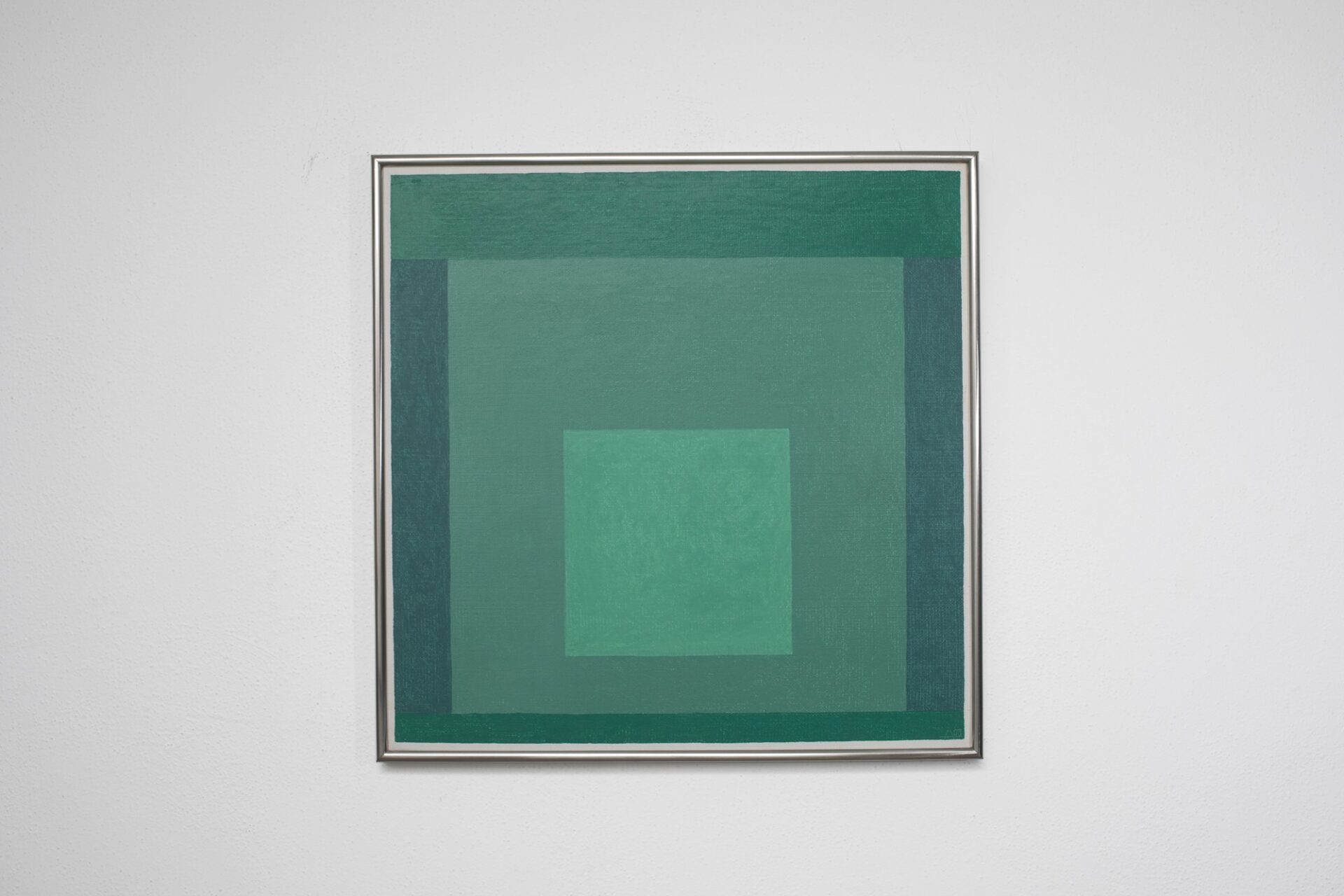Josef Albers was born in Bottrop, Germany, and studied art in Essen and Munich before entering the Bauhaus in Weimar in 1920; he later taught at the Bauhaus in Dessau. In 1933, he emigrated to the United States, becoming the head of the art department at Black Mountain College, near Asheville, North Carolina. Albers had his first solo exhibition in New York in 1936, at the New Art Circle gallery, and a retrospective of his work was held at the Museum of Modern Art, New York, 1971. “I’ve seen a lot of paintings by Albers,” wrote Donald Judd, “often singly, over half the world. They are always amazingly beautiful.”1
Between 1950 and 1976, Albers produced more than two thousand Homage to the Square works.2 In her 1950 article “Albers Paints a Picture,” Elaine de Kooning quoted the artist: “‘Science aims at solving the problems of life, whereas art depends on unsolved problems.’ Thus, he considers each painting a variant rather than a final solution, leaving the way open for endless experiment.”3 Judd wrote, “In Albers’s paintings there is very much a simple, suitable, and natural wholeness to the arrangement of squares within squares, which is one of the best ideas in the world, one which provided enormous versatility and complexity.”4
As Jeannette Redensek described in her 2018 essay “Farbenfabeln: On the Origins and Development of the Homage to the Square,” after using a paper template to score with pencil onto the surface, Albers would place:
the board flat on a table. Working from the center square outward, he applied oil paint directly from the tube on to the board, spreading it with a palette knife. No masking tape or straightedges were used. . . . As each segment of the painting was finished, Albers set the board aside for a few days, sometimes a few weeks, so that the skin of the oil paint might set, the better to avoid smearing when the next color was applied.5
